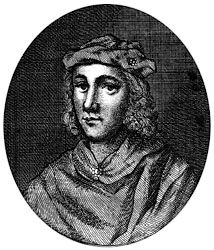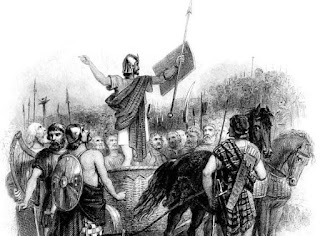Glasgow Cathedral (part 2)
A place of pilgrimage
Glasgow Cathedral has evolved since the 12th century as the magnificent housing for the shrine of one of Scotland's native patron saints, Kentigern. This is the best preserved large Medieval church in Scotland, specifically designed to enable the veneration of the relics.
Nowhere else is it possible for the modern visitor to so easily replicate providing best the experience of the Medieval pilgrim.
Glasgow shares an important feature in common with the reliquary churches of two other important native saints, at Whithorn and Iona, in possessing an under church or crypt – providing best-preserved a highly atmospheric, semi-subterranean setting for the climax of the pilgrimage.
It is believed that Kentigern served as bishop for early Christian communities in Strathclyde, and had also been active as far south as Cumbria. Certainly, the devotees to his later Medieval cult came from these areas.
There is a tradition that Kentigern had developed a church or monastery at Glasgow in the later 6th century, on ground originally consecrated by St Ninian 100 years or so earlier.
Kentigern is believed to have died around 612. The cathedral site at Glasgow – derived from the placename Glascu, meaning 'green hollow" – grew up as a minor pilgrimage place around the burial place of the saint until the early 12th century, when Earl David provided rich endowments and encouraged the revitalisation of the cult. The town developed around an ancient crossing on the Clyde, linked to the cathedral by the High Street.
The bishops and their masons, through the various building campaigns, had crafted a design which clearly mapped the path to be taken by the pilgrims from the moment they entered the cathedral from the west, while at the same time heightening the anticipation and the drama of the experience at strategic points along the way.
The sophisticated design enabled this to take place without causing disruption to the can carrying out their daily round of services. At b times, the flow of traffic could be marshalled by cathedral officials. One of the most senior of these was the Treasurer, who was charged with keeping the necessary equipment, furnishings tapestries, and treasures in good repair.
At the upper level, the focus of light, incense, statuary, and precious metals around the elevated position of the shrine would have drawn the pilgrims through the aisles to the north and south of the choir to gain access to the shrine in the feretory bay beyond the high altar, also dedicated to St Kentigern.
The reredos screen behind the high altar would not have been so high as to obscure the shrine when viewed by worshippers in the west part of the church. A one-way system might have operated to bring the pilgrim out of the south aisle to follow the processional route down the gloomy steps and into the south aisle of the crypt.
Here the upper arrangement of especially sacred features – high altar and shrine-was precisely mirrored by the location of the tomb and the altar to the Virgin.
But real surprise for the pilgrim was the light. Natural illumination from the windows, along with candlelight, was carefully managed to emphasise the tomb under its vaulted canopy with enriched ribs and bosses. This would have been further highlighted by brightly-painted decoration on the stonework.
The vaulting is a of the Medieval mason's craft, because not only did it serve to mark and glorify the tomb, but it was also essential in helping to support the great bulk of the upper church.
Having come down the steps, the astonished pilgrims could perform their devotions at the tomb and then move on to the prestigious Lady Chapel dedicated to the Virgin before descending more steps to the east to reach a further four chapels. They could also make their devotions here before starting the ascent and retracing their steps around the north aisle of the crypt, passing once again by the Lady Chapel and the tomb.
Although the space was cleverly managed, there would undoubtedly be congestion when large crowds attended on feast days, when the crush of bodies in the claustrophobic space could easily have prompted panic, especially among the old and the sick, and others in a frenzied state having experienced 'miraculous' cures.















Comments
Post a Comment